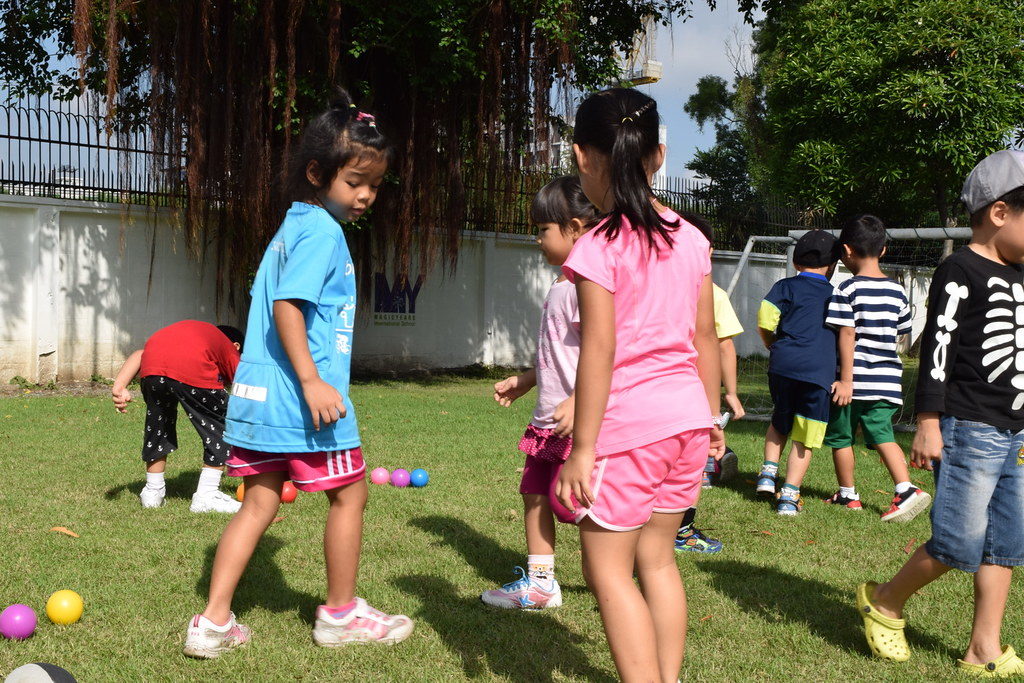Based on the well-established connection between physical activity and psychological wellbeing, Scott Greenspan, Sarah Fefer, Sara Whitcomb, and Jessica Kemp recently collaborated to evaluate the scope of school-based physical activity intervention research in school psychology-related publications. They identified 22 articles published between 1998 and 2018 and searched these publications for features such as project methodology, type of physical activity, target population, the presence of significant outcomes, and effect size for group design studies.
Trends indicated a significant impact, but there have been relatively few studies on the topic. Although an increase in the integration of physical activity in schools to promote student emotional well-being is needed to solidify the state of research in this realm, effects are visible across a spectrum of programs where implemented.
“Burgeoning research highlights that students who engage in physical activity receive a myriad of social‐emotional, behavioral, and academic benefits. A meta‐analysis of 73 studies examined the effectiveness of youths’ engagement in physical activity on mental health outcomes points to physical activity as a means of reducing depressive symptomatology and anxiety and boosting self‐esteem,” the authors write.
“The Centers for Disease Control and Prevention, through a robust systematic review, suggests that physical activity can be implemented across school settings (in addition to physical education), as it can promote on‐task behavior, gains in reading and mathematics skills, and higher levels of self-confidence.”

Opportunities to spend time outdoors, explore, and exercise, have been linked to various facets of student physical, emotional, social, behavioral, and cognitive functioning — one study recently connected outdoor education to psychological and academic benefits.
Not only have exercise-associated interventions been found to reduce symptomology across a spectrum of diagnostic profiles in the context of clinically significant disorder (e.g., ADHD, anxiety, depression, occurrences of psychosis, and more), physical activity is also predictive of reduced symptomology in the general population (e.g., fewer symptoms of depression in childhood).
Although the impact of physical activity on quality of life is known, and schools represent an appropriate space for group-based exercise for children, physical education programs are often the first reduced in favor of increased direct academic enrichment.
“Research from the Youth Sport Trust (2018) found that 38% of secondary schools have decreased time dedicated to physical activity for 14‐ to 16‐year‐olds, with 24% of schools doing so within the last academic year.”
“A national study conducted by the Center on Education Policy (2007) suggests that the passing of No Child Left Behind in 2002 may also contribute to this trend. The study found that 62% of elementary schools and 20% of middle schools reported dedicating increased time to instruction in language arts, reading, and math, while 44% reported cutting time in physical education, art, music, social studies, and recess.”
Many schools, burdened by external pressures to boost test performance and achieve specific academic standards, prioritize the development of programming seemingly more obviously aligned with academic gains. This trend reflects a dismissal of the bidirectional relationships between physical wellbeing, psychosocial wellbeing, and cognitive engagement. Greenspan and colleagues suggest that, due to training in psychological and academic support to students, and intervention science, school psychologists are well positioned to advocate for the development and implementation of programs to promote student physical activity.
Based on the rationale that school psychologists could play a critical role in enhancing opportunities for exercise among students, the team searched ten popular school psychology journals for publications released within the past twenty or so, and achieved the following results:
“How many studies evaluating physical activity interventions have been published within school psychology related journals over the past 20 years (1998– 2018)?”
There were 22 physical activity intervention studies included in this review, 12 of which were published within school psychology‐specific journals (54.5%).
The authors highlight that this is a relatively new area of research. Although the focus on the presence of physical exercise efforts in school psychology-specific journals may have limited the spectrum of results, Greenspan and colleagues’ findings point to the overall limited pool of empirically examined interventions thus far. Continued research is needed in this area.
“What years were studies published?”
Although this search process set out to include studies as early as 1998, studies focused on this work were not obtained until the year 2005. Thus, no studies were found on this topic from 1998 through 2004. […] There was a rise in studies related to physical activity within years 2014 (n = 5) and 2015 (n = 5).
“What types of physical activity interventions were utilized?”
Most prominent were in‐classroom physical activity outside of physical education class (n = 7), yoga interventions (n = 5), and interventions to facilitate more productive recess time (n = 4). The remainder of the studies focused on exercise precluding academic instruction (hereby referred to as antecedent exercise; n = 3), additional physical activity blocks of time scheduled into the curriculum (n = 2), and martial arts (n = 1).
The authors identified significant variability in the nature of supplemental opportunity for physical activity beyond standard recess and physical education, including several schools implementing various combinations of practices including, but not limited to, frequent movement breaks, integration of physical activity into academic curricula, and inclusion of more space and time for movement in preexisting wellness programming.
“What domain related to school psychology practice do these studies focus on (i.e., social‐emotional‐behavioral vs. academic‐cognitive)?”
Four studies focused on academic outcomes, 16 concentrated on social‐emotional‐behavioral issues, and the remaining two focused on a combination of educational and social‐emotional‐behavioral outcomes.
“What tiers of support are these interventions situated in?”
The majority of the interventions are considered to be within Tier 1 practice (n = 15), serving all students through full‐school initiatives such as in‐class physical activity, integrated health curriculum, and facilitated recess. Although fewer studies focused on Tier II practices (n = 3), two of these studies supported small groups of children with asthma and anxiety symptoms or on‐task behavior by providing a yoga intervention through a video.
Collection and analysis of outcome data varied across studies, yet an abundance of social (e.g., increased prosocial behaviors), emotional (e.g., reduced anxiety), and behavioral (e.g., increased attention to educational material) effects were identified across numerous structured physical activity programs.
The impact of structured, supportive physical exercise programming on academic programming is inconclusive based on the sample of studies included in this analysis, but authors suggest that this may be because physical activity impacts more immediate behavioral outcomes, which may ultimately influence academics beyond the scope of time-limited school-based studies. Further, there is no research to indicate that increased attention to physical activity inhibits academic performance.
“The decrease of physical education in schools may serve as a barrier for students who might not otherwise be able to engage in physical activity. School psychologists might consider folding in such Tier 1 intervention as a means to compensate for lack of physical activity time in addition to supporting student outcomes. Such an initiative further promotes social justice and equity.”
****
Greenspan, S. B., Fefer, S. A., Whitcomb, S. A., & Kemp, J. M. (2019). Incorporating physical activity‐Based interventions in school psychology research and practice: A systematic review. Psychology in the Schools. (Link)















One of the problems with the psychological/psychiatric industries is they seem to have “delusions of grandeur” they should be in charge of everything, despite seemingly not even having any success or knowledge of the fields they claim to be “experts” in. For goodness sakes, their entire DSM “bible” was debunked as fraud six years ago, yet the psychologists and psychiatrists are still using it. And they’re all now claiming ignorance of the common adverse effects of drugs they’ve been force feeding the children for decades, and they’ve got no clue how to wean people off their neurotoxins. Plus the psychologists and psychiatrists always claim everything needs more research funding.
I agree, the children do need their “physical education, art, music, social studies, and recess.” But I think the physical education teachers should be in charge of the physical education. The schools should start hiring art teachers again, and they should teach art and music. Social studies teachers should teach social studies. And let the kids have recess.
Why does any of this common sense stuff need to be researched by psychologists, and why should the school psychologists be in charge of any of it?
The school psychologists are in charge of defaming and poisoning the children, that’s your job. And now you’re becoming embarrassed by the mess you’ve created, so want to pretend you are about “social justice”? No, the job of the “mental health” workers is protecting the interests of the wealthy and/or institutions, by getting rid of justice for all, outside the law.
Report comment
The subjects I hated most in school were lunch, recess, and gym. The reason was that I got teased the most during those times. I remember outside of school loving to ride my bike, to do gymnastics in the yard, or to stand on my head just for the heck of it. I’m fairly sure that if I tried I could still do that.
I’m not sure how they could re-do gym class to avoid the social tiers that result. The tallest, or best coordinated always win. Someone else always loses.
Report comment